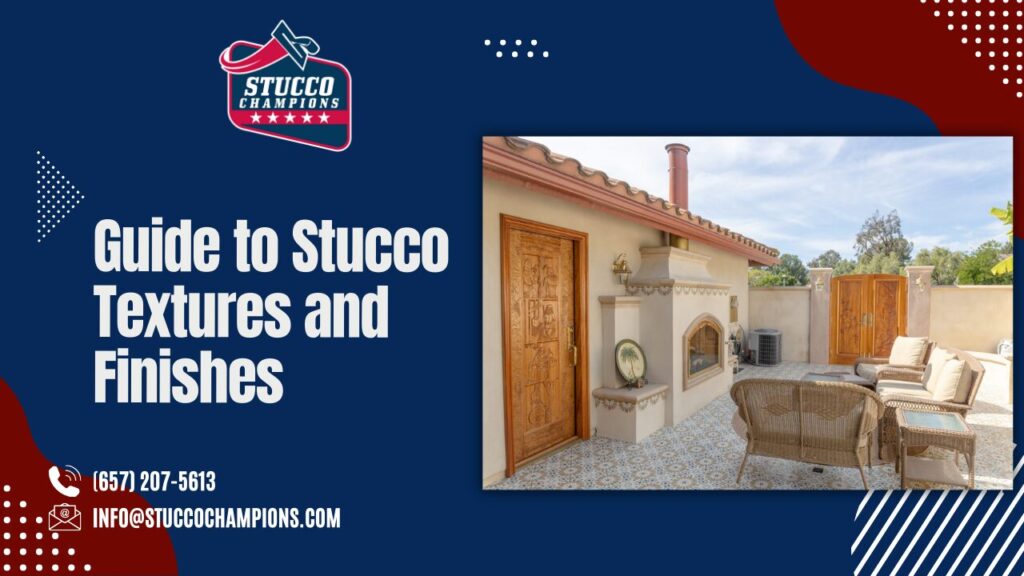Guide to Stucco Textures and Finishes
Stucco, a versatile and durable material, is widely used in building exteriors. Understanding its textures and finishes is crucial for homeowners, architects, and builders. This guide delves into the various stucco textures and finishes, providing a clearer understanding of each type’s characteristics, application methods, maintenance needs, and suitability for different regions and substrates.
Cat Face Textures
Cat Face textures are characterized by smooth surfaces with varying sizes of rough areas (inclusions). These inclusions differ in size, shape, and frequency, adding uniqueness to each finish. Cat Face textures can be achieved using either traditional or acrylic stucco, applied in two coats, and finished by hand. This texture offers versatility but varies significantly based on the inclusions’ proximity to each other.
Dash Finishes
Dash finishes, ranging from light to heavy, are typically sprayed on, though hand application is possible for smaller areas. Requiring two to three coats for uniformity, these finishes can be applied with both synthetic and traditional stucco. They have a somewhat rough texture post-drying and are relatively easy to patch, provided the color matches correctly.
Lace and Skip Trowel Textures
Common in residential and commercial applications, Lace and Skip Trowel textures can effectively hide imperfections. They are mostly applied by hand or sprayed and then flattened using a trowel. Available in fine, medium, and coarse patterns, traditional stucco is commonly used for this finish, though acrylic versions are available but lack the depth of traditional stucco.
Sand/Float Finishes
Ideal for commercial applications, Sand/Float textures are simple yet versatile, available in fine, medium, and coarse appearances. This finish is usually troweled on, requiring just one coat, and is relatively easy to patch. Both traditional and acrylic stucco can be used, making it a flexible option for various projects.
Smooth Textures and Finishes
Among the most challenging to achieve, smooth textures are increasing in popularity due to their ease of cleaning and customizability. Achieved with a fine cement-based or synthetic/acrylic finish, they require a fine/ultra-fine stucco base to minimize lines. Colors can be added for a mottled look, though they are harder to patch and more prone to cracking.
Worm/Swirl or Putz Finishes
These unique finishes, less common today, feature larger aggregate pieces leaving groove-like indentations. Usually made with a synthetic stucco mix, they come in various patterns and are applied by hand using a circular motion. Though interesting visually, they are challenging to apply and patch.
Santa Barbara Finish
Resembling an older adobe style, the Santa Barbara finish uses smaller sand particles for a smoother appearance. This traditional stucco material is applied in two coats using a pool trowel and offers an irregular, hand-done look. It may exhibit slight color variations due to its cement-based nature, addressable through fog coating or painting.
English Stucco Finish
Less common than other finishes, English Stucco is typically found in older buildings or some newer constructions. It is usually applied with traditional materials, though acrylic versions are possible. This finish varies among individual applications and is slightly easier to patch compared to others.
Other Custom Finishes
Custom finishes often involve modeling in the base coat, as seen in the accompanying images. These finishes usually have a sand finish on top, adding to their custom appearance.
Expertise, Transparency, and Reader Value
As an experienced professional in stucco application and maintenance, I aim to provide accurate and reliable information. However, it’s important to consult with local professionals for specific advice, especially regarding regional suitability and substrate compatibility.
Cost and Maintenance Considerations
Cost and maintenance vary depending on the texture and finish type. Smooth textures, while aesthetically appealing, might require more maintenance and are costlier due to their complexity in application. Rougher textures like Dash or Lace and Skip Trowel are more forgiving and can be more budget-friendly.
Choosing the Right Texture
When selecting a stucco texture, consider the architectural style of the building, the regional climate, and maintenance preferences. For instance, smoother finishes suit modern designs but may need more upkeep, while rougher textures offer a traditional look with less maintenance.
Further Resources
For additional information, refer to professional resources and local experts. Online forums, manufacturer websites, and professional associations can provide valuable insights and up-to-date information on stucco textures and finishes.
Conclusion
Understanding stucco textures and finishes is key to making informed decisions for your building projects. Each texture offers unique benefits and challenges, and the choice depends on aesthetic preference, maintenance willingness, and budget. Consult professionals for personalized advice and explore further resources for comprehensive knowledge.
Last week, we shared Identifying and Repairing Different Types of Stucco Cracks, offering expert advice on recognizing various crack patterns and how to address them effectively. If you’re looking to maintain your stucco’s integrity, be sure to check out this detailed guide for expert insights!
—

